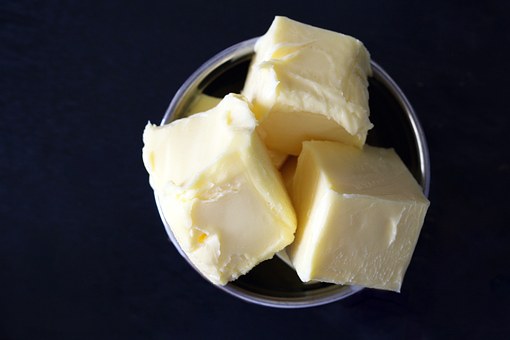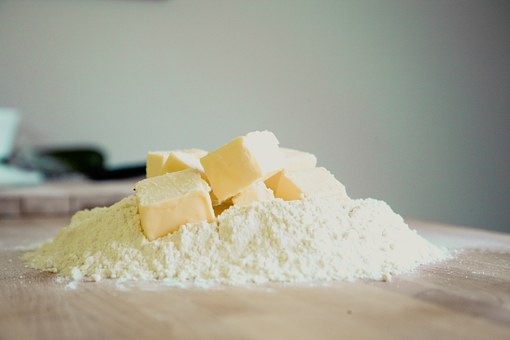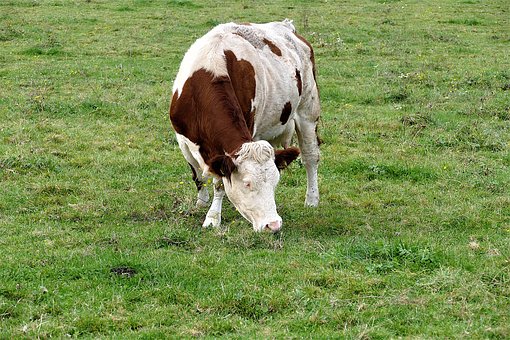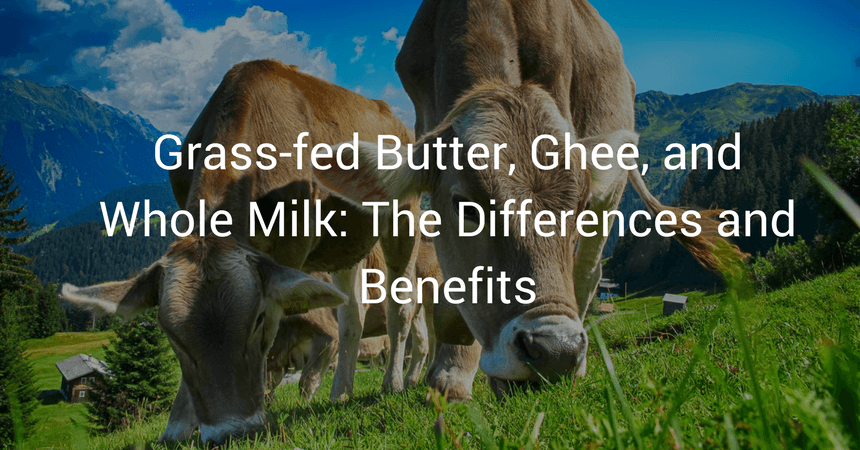Table of Contents
Grass-fed butter, ghee, and milk (yes, milk) are often used interchangeably in the fitness/health community.
Because of this, knowing how each one fits into your diet can be very confusing! Fear not, however; we’re here to help.
Grass-fed butter, ghee, and whole milk all serve various dietary purposes and suit individuals with differing needs.
Each has a unique nutrient composition, meaning they have different ways of improving the way your body works.
In this article, we’ll look at the differences between the three and their specific benefits.
Do you ever wonder why someone would use butter over ghee? On the other hand, how does whole milk fit into the equation?
It’s time to find out.
Grass-fed Butter – Differences and Benefits

Let’s start by clearing the air; not ALL butter is bad!
Certain kinds of butter, produced by certain kinds of cows, are actually some of the healthiest fats you can get your hands on!
The most treasured of all is “grass-fed butter”, or butter from a cow who grazed on grass (as all cows should).
This form of butter is quite nutrient dense, containing over 400 healthy fatty acids and a respectable range of vitamins.
That’s right – butter isn’t just a block of damaging fat.
You can do much more than butter your bread with it, however.
Try adding it to your coffee for an invigorating, neurologically-healthy start to your day!
Adding butter to your pan before you cook is another way to enjoy it.
Butter doesn’t oxidize as readily as other fats do at high temperatures, so it retains more of its nutrients.
Skip the olive oil and coat your pan with a slab of grass-fed butter.
Ghee – How It’s Different

Curiously enough, not many people know that butter contains lactose and casein.
If you’re sensitive to dairy products or lactose intolerant, butter doesn’t fit into your diet.
There’s a substance, however, that’s similar to butter in both taste and texture, without the casein and lactose.
That substance is known as ghee.
Ghee is created from butter, through a process that uses heat to remove casein and lactose.
It’s much easier on the digestive tract, even for people who don’t have a dairy intolerance or dairy allergies.
Nutritionally, ghee and butter are quite similar.
Both contain an excellent amount of Vitamin A (for your eyes).
Nutritionally, grass-fed butter contains a higher amount of Vitamin D, a vitamin that’s key for both mental clarity and bone health.
Ghee, however, contains a higher percentage of Vitamin E, a potent antioxidant that also helps keep skin and hair healthy.
Long story short – Ghee and grass-fed butter are both great to cook with and consume with foods.
If you’re sensitive to dairy, however, get your hands on some ghee!
Whole Milk – Benefits and Differences

When it comes to getting healthy fat for a healthy diet, ghee and grass-fed butter are excellent sources of it.
Things such as MCT oil and coconut oil are also great sources of healthy fats.
If your gut can tolerate it, however, whole milk is an often overlooked source of healthy fats such as Omega-3’s.
Whole milk has long been demonized due to its fat content, like grass-fed butter, however, the source matters.
Whole, fatty, milk from cows raised chewing the ground’s green food is ideal.
This is especially true when compared to the nutrient content of the milk of a cow raised on GMO soy-based or corn-based feed.
Like butter and ghee, it’s chock full of healthy omega-3 fatty acids.
It’s also loaded with calcium, magnesium, and even some Vitamin D!
Obviously, if you’re wary of dairy products than milk isn’t for you.
Drinking milk is not a recommended part of the Bulletproof diet, due to it’s glycemic impacts and ability to knock you out of ketosis pretty quickly. We will let you decide!
Take This Into Consideration
Sarah is a healthy, young, and inquisitive woman who’s looking to find a great source of healthy fats to add to her diet.
She hears about butter, ghee, and whole-fat milk but doesn’t know how to decide between the three.
Theoretically, if Sarah wants something to add flavour, texture, and nutrients to her cooked food, butter is her best choice.
If, however, Sarah is lactose intolerant but wants to cook with a healthy fat, ghee is the best choice.
Finally, if Sarah is completely content with dairy products and wants a way to enjoy a fatty, nutritious drink, whole-fat milk is fine in moderation.
Ultimately, it depends on what you want if you plan on integrating any of these healthy fats into your diet.
Ghee, Grass Fed Butter, and Whole Milk Clarified
Ghee, grass-fed butter, and whole milk are often used as sources of healthy fats in today’s fitness/health communities.
You don’t have to be a health nut to use these fats successfully, however.
It’s easy to substitute these scrumptious products into your diet.
You just have to know what you can handle!
All pose their advantages (and some disadvantages in the case of milk).
Grass-fed butter is a great source of several vitamins and contains healthy fatty acids, such as conjugated linoleic acid.
Ghee is as nutritious as both of the preceding products but doesn’t contain any (or only trace amounts of) casein or lactose.
It’s ideal for those of us whose digestive tracts aren’t fit for dairy products.
Whole fat milk (from grass-fed cows) is also a great source of calcium, but you can get a bunch from leafy greens too.
It’s also an excellent source of several vitamins and key minerals, such as magnesium.
There you have it; those are the ins and outs of grass-fed butter, ghee, and whole fat milk.
All three are excellent sources of healthy fats.
When they’re consumed in the best manner, they’re a fortuitous part of a healthy diet.
Don’t leave out the healthy fats!


Free Shipping
On orders over $149$14 Flat Rate Shipped fast and Australia-wide